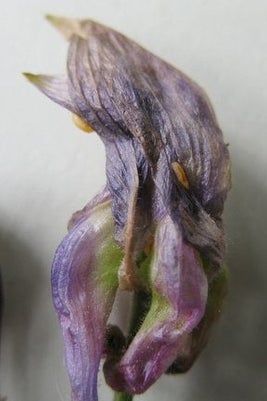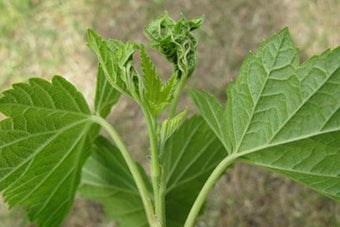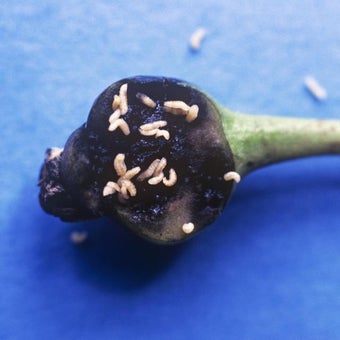
Quick facts
Common name - Aquilegia gall midge
Scientific name - Macrolabis aquilegiae
Plants affected - Aquilegia species and cultivars
Main symptoms - Deformed flowers that fail to open fully
Caused by - Larvae of a small fly
What is aquilegia gall midge?
Aquilegia gall midge is a tiny fly that lays eggs on the developing flowers of aquilegia. During May and June the feeding activities of the larvae inside flower buds result in distorted flowers that fail to fully open.
Gall midges are a family of flies, the Cecidomyidae, there are more than 600 species found in Britain. As adults most are small brown or black flies, they do not bite. As the name suggests many species feed as larvae within plant tissues causing galling and distortion. Some are however, predatory on aphids and mites whilst others feed on rust fungi.
Symptoms
If the foliage of your aquilegia appears normal but the flowers are swollen and distorted then aquilegia gall midge is almost certainly the cause. Numerous pale orange or white maggots, 2-3 mm long, may be found inside the .
Management
Management options for this insect are limited to removal of affected in an attempt to reduce numbers of larvae surviving to adult. Doing this regularly to remove larvae before they have completed their feeding and exited the flower to drop to the soil may give the best results. Damage by this insect comes to an end during June, with later flowers escaping unharmed. This midge is specific to aquilegia and will not affect any other plants.
There are indications that the population levels fluctuate from year to year so in some years you may find that your plants are relatively unaffected, other years many flowers will be lost.
Biology
Like many gall midges the biology of aquilegia gall midge is not well known. It is however, specific to aquilegia and will not affect any other plants.
This midge has only one generation per year. Adults emerge in the spring and lay eggs on the developing flower . The larval feeding period is likely to be short, occurring over a few weeks in May and June, after which the maggots drop down into the soil to pupate.





